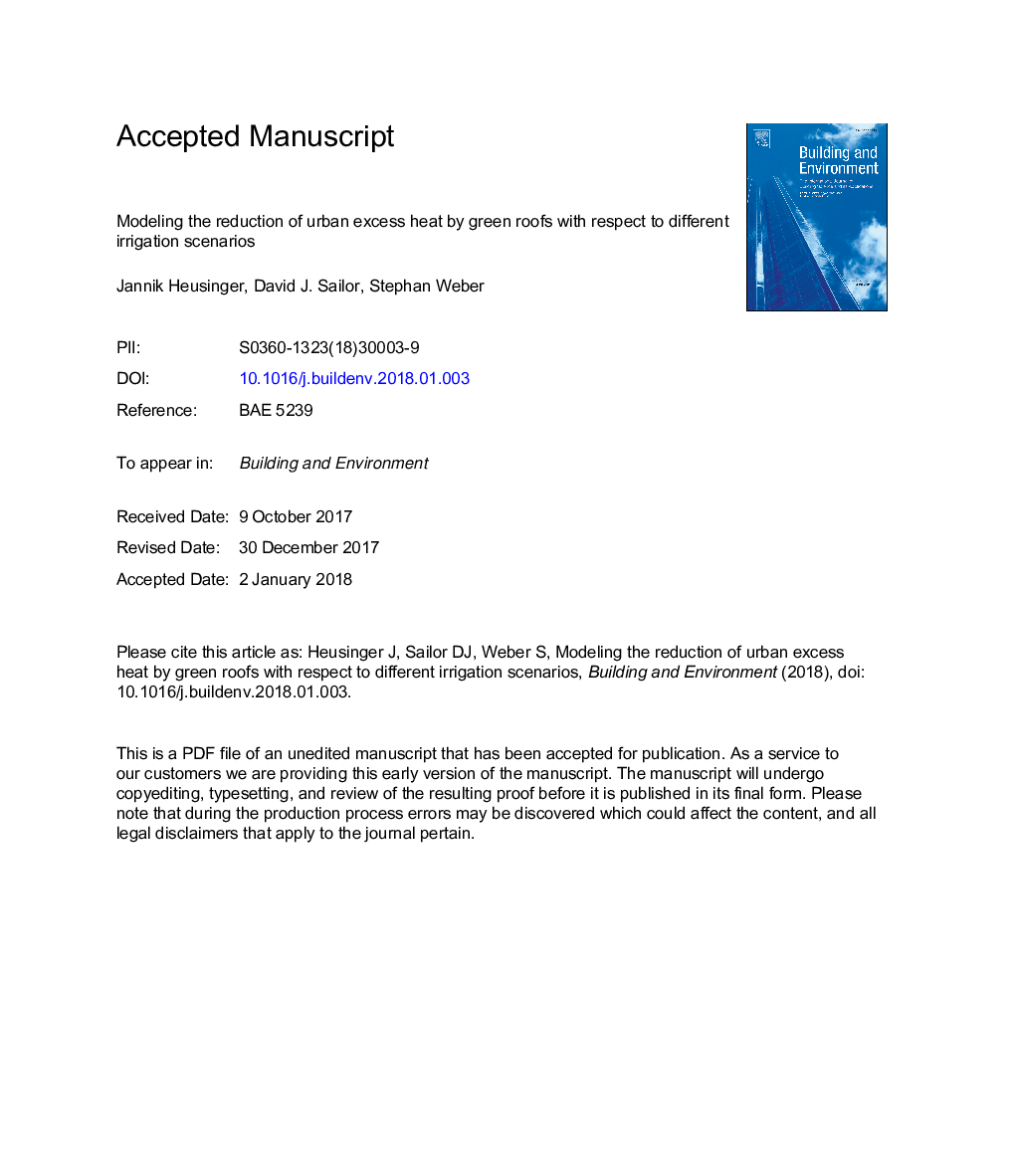| Article ID | Journal | Published Year | Pages | File Type |
|---|---|---|---|---|
| 6698051 | Building and Environment | 2018 | 36 Pages |
Abstract
High correlation of sensible and latent heat (QE) fluxes between measured and modelled data for the original and the modified version of the green roof model were observed (for the original model, R2â¯=â¯0.91 and 0.81 for QH and QE, respectively, while for the modified version R2â¯=â¯0.91 and 0.80, respectively). The modified version was applied to study irrigation, due to lower systematic errors for QH, QE and better performance for the substrate moisture content. In comparison to a black roof the green roof reduces urban excess heat by 15%-51% with sustainable irrigation, by 48%-75% with unrestricted irrigation, but drops to 3% for unirrigated roofs in the different cities. Sustainable irrigation can be effective in climates with high annual (or summerly) precipitation.
Related Topics
Physical Sciences and Engineering
Energy
Renewable Energy, Sustainability and the Environment
Authors
Jannik Heusinger, David J. Sailor, Stephan Weber,
